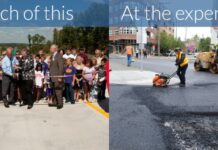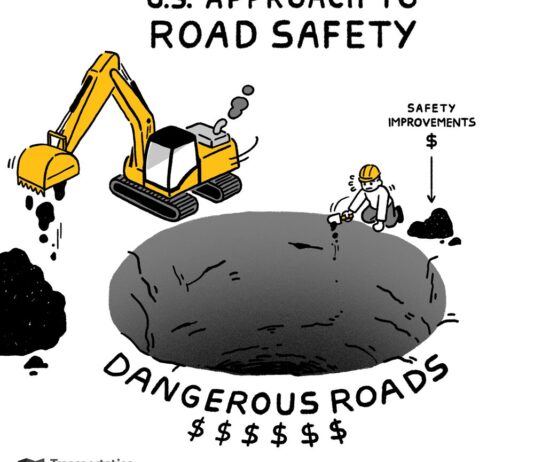The half-promise of the Carbon Reduction Program
This post was written by Mollie Dalbey and Stephen Coleman Kenny, members of the Transportation for America policy team.
The Carbon Reduction Program (CRP), a...
Reconnecting Communities: Initiating restorative transportation justice
Much of the work of smart transportation focuses on playing defense against divisive infrastructure projects that would make travel more difficult. Now, communities and...
Little-known university research centers could hold the key for transportation solutions
The infrastructure law sets aside funding for university transportation centers (UTCs) to research and provide actionable recommendations on emerging transportation issues. However, in the face...
What’s missing in the new rule for EV chargers?
Photo from Pxfuel/Architecture and DesignThe Infrastructure Investment and Jobs Act (IIJA, or just the infrastructure law) created the National Electric Vehicle Infrastructure (NEVI) Formula...
Vision Zero won’t happen without Safe Streets for All
Signs like this one, while welcome, aren’t enough to lower the ever-climbing rate of pedestrian fatalities. Fortunately, localities have other resources to make on-the-ground...
The infrastructure law wasn’t perfect, but now it’s reality
Flickr photo by Oregon Department of TransportationFocusing on whether the infrastructure law was “good” or “bad” will fail to shape how its historic cash...
We need a new approach to transportation: T4A’s efforts to get there
Flickr photo by Daniel R. BlumeSix months into 2022, a lot’s been accomplished to steer the infrastructure law to better outcomes, but there’s still...
Justice40 “benefits” could mean more emissions, worse health outcomes in disadvantaged communities
How can we ensure that investments in communities lead to safer, more convenient infrastructure for all?In President Biden’s first weeks in office, he established...
Getting to equitable outcomes in the infrastructure law
Despite the rhetoric, the infrastructure law falls well short of truly addressing the decades of harm our transportation system has inflicted on marginalized communities,...
USDOT and Congress: Taking sides but not talking about implementation
If we’re going to ensure that the historic amount of transit funding in the infrastructure law actually results in good, usable, high quality transit...




















